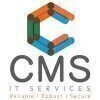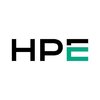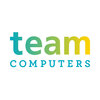Server Engineer
40+ Server Engineer Interview Questions and Answers

Asked in Sysnet Global Technologies

Q. How do you troubleshoot HPE hardware if it is not booting?
To troubleshoot HPE hardware not booting, check power supply, cables, BIOS settings, hardware connections, and perform diagnostics.
Check power supply and ensure it is properly connected and functioning
Inspect cables and connections to ensure they are secure and undamaged
Verify BIOS settings and ensure they are correctly configured for booting
Check hardware connections such as RAM, hard drives, and expansion cards
Perform diagnostics using HPE tools or built-in diagnostics to i...read more

Asked in Sysnet Global Technologies

Q. What types of operating systems are you familiar with?
I am familiar with various operating systems including Windows, Linux, and macOS.
Windows
Linux
macOS
Server Engineer Interview Questions and Answers for Freshers

Asked in CMS IT Services

Q. What are OST and PST files in MS Office?
OST and PST are file formats used by Microsoft Outlook to store email data.
OST stands for Offline Storage Table and is used for offline access to email data.
PST stands for Personal Storage Table and is used for archiving email data.
OST files are created when Outlook is used in Cached Exchange Mode.
PST files can be imported or exported to transfer email data between computers or accounts.

Asked in Value Point Systems

Q. Can you explain your experience with hardware on Dell and HP servers?
I have extensive experience with Dell and HP servers, focusing on hardware configuration, maintenance, and troubleshooting.
Configured Dell PowerEdge servers for various applications, optimizing RAID settings for performance and redundancy.
Performed hardware upgrades on HP ProLiant servers, including adding RAM and replacing hard drives to enhance performance.
Utilized Dell OpenManage and HP Insight Manager for monitoring server health and managing firmware updates.
Troubleshot ...read more

Asked in Value Point Systems

Q. What are the key responsibilities associated with the Data Center Operator position?
Data Center Operators manage and maintain data center operations, ensuring optimal performance and uptime of IT infrastructure.
Monitor server performance and health, using tools like Nagios or Zabbix to detect issues.
Perform routine maintenance tasks, such as applying software updates and patches to ensure security.
Manage physical hardware, including installation, configuration, and troubleshooting of servers and networking equipment.
Ensure proper cooling and power supply in ...read more

Asked in CMS IT Services

Q. 1. You know office365 and how to configure
Yes, I am familiar with Office365 and can configure it.
I have experience with setting up and managing Office365 accounts
I am proficient in configuring Exchange Online, SharePoint Online, and OneDrive for Business
I am familiar with PowerShell commands for Office365 administration
I can troubleshoot and resolve issues related to Office365 services
Server Engineer Jobs




Asked in Consilio

Q. What are FSMO roles, and can you explain them?
FSMO roles are flexible single master operations roles in Active Directory that control specific operations and functions.
FSMO roles are used in Active Directory to manage and control specific operations and functions.
There are five FSMO roles: Schema Master, Domain Naming Master, PDC Emulator, RID Master, and Infrastructure Master.
Schema Master role manages updates and modifications to the Active Directory schema.
Domain Naming Master role controls the addition or removal of ...read more

Asked in Hewlett Packard Enterprise

Q. What are the different types of disks used in computing?
Computing uses various disk types, including HDDs, SSDs, and hybrid drives, each with unique performance and storage characteristics.
Hard Disk Drives (HDD): Traditional spinning disks that offer large storage capacities at a lower cost, commonly used in desktops and servers.
Solid State Drives (SSD): Faster storage devices with no moving parts, providing quicker data access and improved performance, ideal for gaming and high-performance applications.
Hybrid Drives (SSHD): Combi...read more
Share interview questions and help millions of jobseekers 🌟


Asked in Hewlett Packard Enterprise

Q. What is the process for creating Logical Volume Management (LVM)?
Creating LVM involves partitioning disks, initializing physical volumes, and creating logical volumes for flexible storage management.
Install LVM: Ensure LVM is installed on your system using package managers like 'apt' or 'yum'.
Create Physical Volumes: Use 'pvcreate /dev/sdX' to initialize disks as physical volumes for LVM.
Create Volume Group: Use 'vgcreate myvg /dev/sdX' to create a volume group that aggregates physical volumes.
Create Logical Volumes: Use 'lvcreate -n mylv ...read more
Asked in Cimpress-Vistaprint

Q. How do you capture logs from an arbitrary location?
Use a log collection tool to capture logs from any random location.
Identify the log collection tool that suits your needs.
Configure the tool to collect logs from the desired location.
Ensure that the tool has the necessary permissions to access the logs.
Schedule the tool to run at regular intervals to capture new logs.
An example of a log collection tool is Logstash.

Asked in Insight Business Machines

Q. Tell me about your server hardware experience.
I have extensive experience with server hardware, including assembly, maintenance, and troubleshooting across various environments.
Built and configured servers from scratch, selecting components based on performance needs and budget constraints.
Performed regular maintenance on server hardware, including cleaning, replacing faulty components, and upgrading memory and storage.
Troubleshot hardware issues, such as diagnosing failing hard drives and replacing them with minimal dow...read more

Asked in Indus Valley Partners

Q. What could be the cause if you are unable to migrate VMs?
VM migration issues can arise from various factors including network, storage, and compatibility problems.
Network connectivity issues: If the source and destination hosts cannot communicate, migration will fail.
Insufficient resources: Lack of CPU, memory, or storage on the destination host can prevent migration.
Incompatible VM configurations: Different hypervisor versions or settings may not support migration.
Storage accessibility: If the VM's storage is not accessible from t...read more

Asked in Team Computers

Q. What type of technology devices are used in infrastructure?
Infrastructure technology devices include servers, routers, switches, and storage systems that support network operations.
Servers: Physical or virtual machines that host applications and services (e.g., web servers, database servers).
Routers: Devices that forward data packets between computer networks (e.g., Cisco routers).
Switches: Network devices that connect devices within a LAN (e.g., managed switches for VLAN support).
Firewalls: Security devices that monitor and control ...read more

Asked in Hitech Digital Solutions

Q. What types of IBM servers are you familiar with?
IBM has a wide range of servers including BladeCenter, System x, Power Systems, and z Systems.
BladeCenter servers
System x servers
Power Systems servers
z Systems servers
Asked in Compitent

Q. What is a DNS server?
A DNS server translates domain names into IP addresses, enabling users to access websites using easy-to-remember names.
DNS stands for Domain Name System, which is essential for internet functionality.
It resolves human-readable domain names (e.g., www.example.com) to machine-readable IP addresses (e.g., 192.0.2.1).
There are different types of DNS servers: authoritative, recursive, and caching servers.
An authoritative DNS server holds the DNS records for a domain and responds t...read more

Asked in Sysnet Global Technologies

Q. What is the iLO IP address?
iLO IP stands for Integrated Lights-Out IP. It is a management processor embedded in HP ProLiant servers for remote server management.
iLO IP is used to remotely manage and monitor HP ProLiant servers.
It provides features like power control, remote console access, and virtual media support.
iLO IP allows administrators to perform tasks without physically being present at the server location.
It has its own dedicated IP address for remote access.
iLO IP can be accessed through a w...read more

Asked in thinkbridge

Q. How did you migrate Windows Server 2019 to 2022?
Migrating from Windows Server 2019 to 2022 involves planning, preparation, and execution to ensure a smooth transition.
1. Assess current environment: Evaluate applications and services running on Windows Server 2019.
2. Backup data: Create full backups of the server and critical data to prevent loss during migration.
3. Check compatibility: Ensure that hardware and software are compatible with Windows Server 2022.
4. Plan migration strategy: Choose between in-place upgrade or fr...read more

Asked in Indus Valley Partners

Q. What is the election process in HA in VMware?
The election process in VMware HA ensures a master host is selected to manage failover and resource allocation.
VMware HA (High Availability) uses an election process to determine the master host in a cluster.
The master host is responsible for monitoring the health of other hosts and VMs.
If the master host fails, the remaining hosts will hold a new election to select a new master.
The election is based on the host's priority, which can be configured in the cluster settings.
For ...read more

Asked in Sysnet Global Technologies

Q. Components of server
Components of a server include CPU, RAM, hard drives, power supply, and network interface cards.
CPU (Central Processing Unit) - processes data
RAM (Random Access Memory) - stores data temporarily
Hard drives - stores data permanently
Power supply - provides power to the server
Network interface cards - connects the server to a network

Asked in Insight Business Machines

Q. What is RAID and how can it be used?
RAID (Redundant Array of Independent Disks) enhances data storage reliability and performance through disk redundancy.
RAID combines multiple physical disks into a single logical unit.
RAID levels (e.g., RAID 0, RAID 1, RAID 5) offer different balances of performance, redundancy, and storage capacity.
RAID 0 stripes data across disks for improved speed but offers no redundancy.
RAID 1 mirrors data on two disks, providing redundancy but halving storage capacity.
RAID 5 uses stripin...read more

Asked in SBI Life Insurance Company

Q. What is MAC binding?
Mac binding is a security feature that restricts network access to devices with specific MAC addresses.
Mac binding is also known as MAC address filtering.
It is commonly used in network security to prevent unauthorized access.
It works by allowing only devices with specific MAC addresses to connect to the network.
MAC addresses are unique identifiers assigned to network devices.
For example, a server administrator may use MAC binding to restrict access to a network printer to onl...read more

Asked in Pace Business Machines

Q. What is a backup, and what are its types?
Backup is the process of creating copies of data to prevent data loss in case of system failures or disasters.
Types of backup include full backup, incremental backup, and differential backup.
Full backup involves copying all data in a system.
Incremental backup only copies data that has changed since the last backup.
Differential backup copies all data that has changed since the last full backup.
Other types of backup include mirror backup, synthetic backup, and continuous data p...read more

Asked in Sysnet Global Technologies

Q. Types of Raids
RAID stands for Redundant Array of Independent Disks. There are several types of RAID configurations.
RAID 0 - Striping
RAID 1 - Mirroring
RAID 5 - Striping with parity
RAID 6 - Striping with double parity
RAID 10 - Combining RAID 0 and RAID 1
RAID 50 - Combining RAID 5 and RAID 0
RAID 60 - Combining RAID 6 and RAID 0

Asked in Sysnet Global Technologies

Q. Types of server
Servers can be classified based on their purpose and functionality.
Web servers
Application servers
Database servers
Mail servers
File servers
Print servers
Proxy servers
Virtual servers

Asked in Shell

Q. What is Virtualization?
Virtualization is the process of creating a virtual version of a device or resource, such as a server, storage device, network or operating system.
Allows multiple virtual instances to run on a single physical machine
Improves efficiency by maximizing resource utilization
Enhances flexibility and scalability of IT infrastructure
Examples include VMware, Hyper-V, and VirtualBox
Asked in Cimpress-Vistaprint

Q. What are the differences between RHEL 6 and 7?
RHEL 7 has improved security, performance, and scalability compared to RHEL 6.
RHEL 7 uses systemd instead of init
RHEL 7 has better support for Docker containers
RHEL 7 has improved security features such as firewalld and SELinux
RHEL 7 has better performance and scalability with support for larger systems and more CPUs
RHEL 7 has updated versions of software packages compared to RHEL 6

Asked in HighRadius

Q. What is a Virtual Machine?
A virtual machine is a software-based emulation of a physical computer that can run operating systems and applications.
Virtual machines allow multiple operating systems to run on a single physical machine
They are isolated from each other and can be easily created, duplicated, or deleted
Common virtual machine software includes VMware, VirtualBox, and Hyper-V

Asked in Relyon Softech

Q. How do you take a backup?
Backups can be taken using various methods depending on the type of data and system. It is important to have a backup strategy in place.
Identify the data that needs to be backed up
Choose a backup method (full, incremental, differential)
Select a backup location (local, cloud, offsite)
Schedule backups regularly
Test backups to ensure data can be restored
Consider disaster recovery options
Asked in Tenet Computer And Communication

Q. What are some significant features of UNIX?
Some significant features of UNIX include multi-user capability, multitasking, portability, and a hierarchical file system.
Multi-user capability allows multiple users to access the system simultaneously.
Multitasking enables running multiple processes at the same time.
Portability means UNIX can run on various hardware platforms.
Hierarchical file system organizes files in a tree-like structure for easy navigation.

Asked in Team Computers

Q. What is DHCP?
DHCP stands for Dynamic Host Configuration Protocol. It is a network protocol that automatically assigns IP addresses to devices.
DHCP is used to simplify network administration by automatically assigning IP addresses to devices.
It allows devices to join a network without manual configuration.
DHCP servers can also assign other network configuration settings, such as subnet mask and default gateway.
DHCP leases are temporary and must be renewed periodically.
DHCP can be used in b...read more
Interview Questions of Similar Designations
Interview Experiences of Popular Companies








Reviews
Interviews
Salaries
Users

















